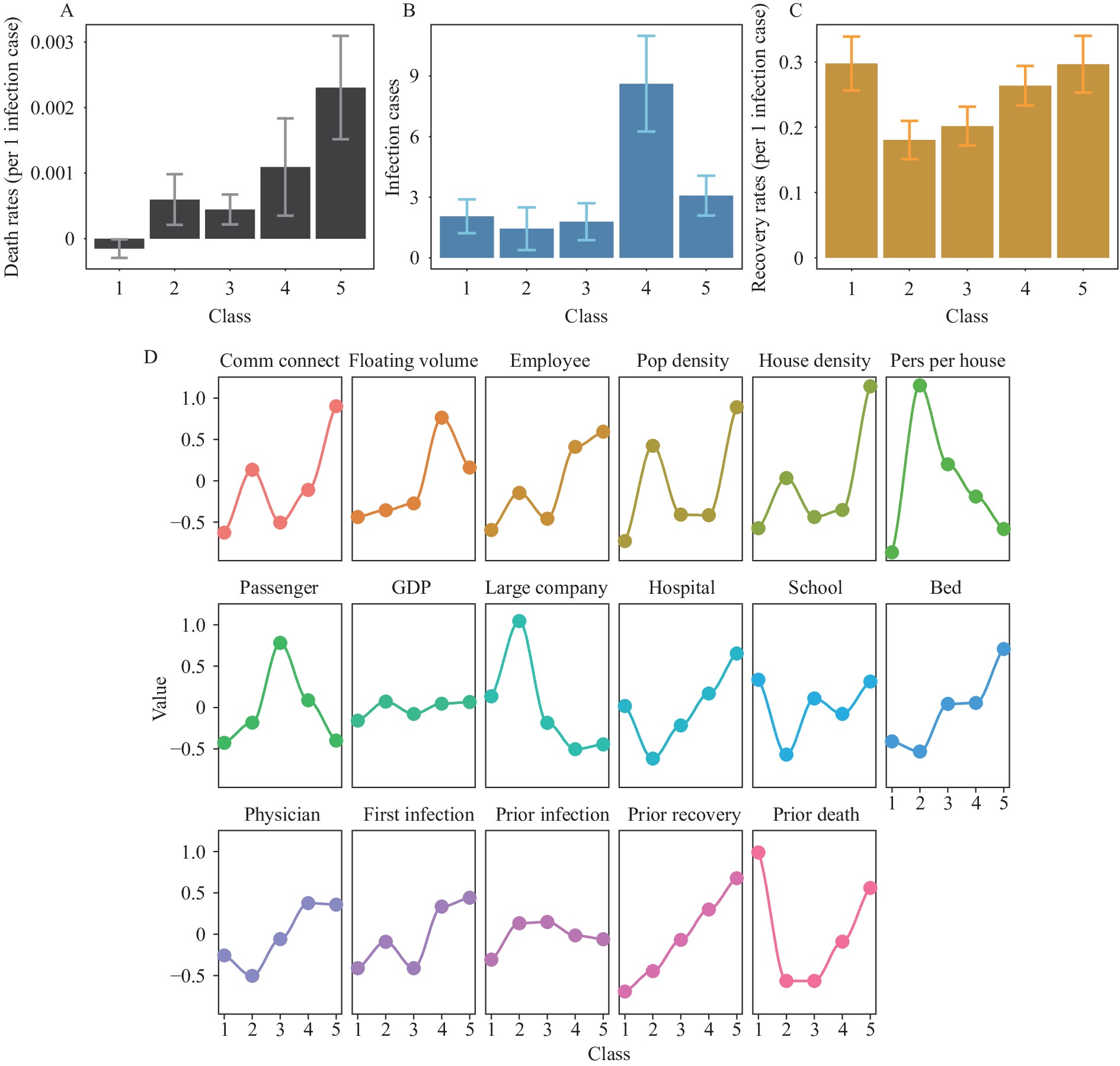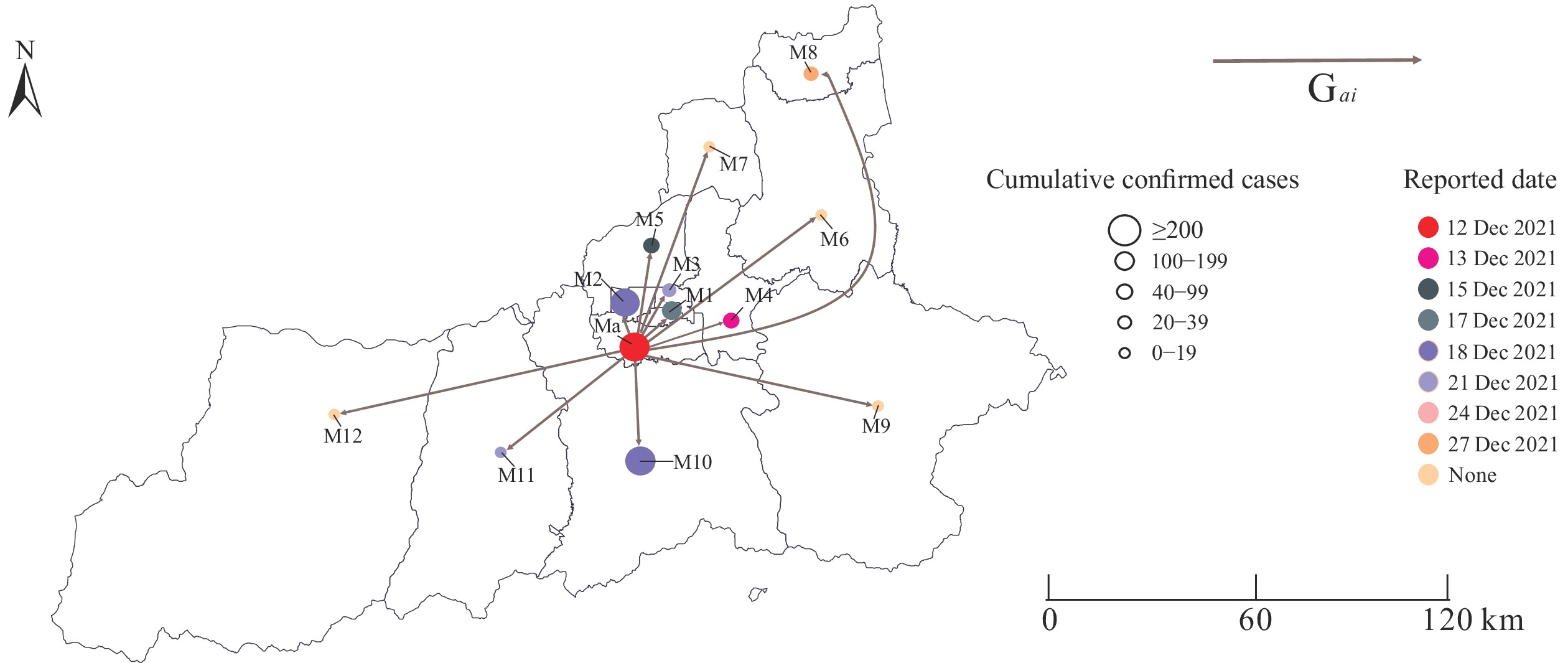2022 Vol. 4, No. 31
Government used mobility restrictions to help contain the first wave of coronavirus disease 2019 (COVID-19) across cities in China. The restrictions were lifted during times of non-zero incidence in response to a return to work order that went into effect on February 10, 2020.
The effect of lifting mobility restrictions on COVID-19 death rate and incidence varied by city, with smaller increases or even reductions in cities with low community connectivity and small floating volume, and larger increases in cities with high community connectivity and large floating volume. Effects on recovery rates were similar across cities.
City-specific mobility restriction lifting is likely to be beneficial. Two indexes, community connectivity and floating volume, can inform the design of city-specific mobility restriction lifting policies.
After the epidemic in Wuhan City was brought under control in 2020, local outbreaks of coronavirus disease 2019 (COVID-19) in the mainland of China were mainly due to imported COVID-19 cases. The ongoing evolution of severe acute respiratory syndrome coronavirus 2 (SARS-CoV-2) has continued to generate new variants. Some have been designated as variants of concern (VOCs) by the World Health Organization (WHO). To better assess the role of imported SARS-CoV-2 surveillance and the prevalence of VOCs in 2021, the genomic surveillance data of SARS-CoV-2 from imported COVID-19 cases of 2021 in the mainland of China were analyzed.
The analyses included the number of sequence submissions, time of sequence deposition, and time of detection of the VOCs in order to determine the timeliness and sensitivity of the surveillance. The proportions of VOCs were analyzed and compared with data from the Global Initiative of Sharing All Influenza Data (GISAID).
A total of 3,355 sequences of imported cases were submitted from 29 provincial-level administrative divisions, with differences in the number of sequence submissions and median time of sequence deposition. A total of 2,388 sequences with more than 90% genomic coverage were used for lineage analysis. The epidemic trend from Alpha to Delta to Omicron in imported cases was consistent with that in the GISAID. In addition, VOCs from imported cases were usually identified after WHO designation and before causing local outbreaks.
The global distribution of SARS-CoV-2 VOCs changed rapidly in 2021. Robust genomic surveillance of the imported SARS-CoV-2 in the mainland of China is of great significance.
The aim of this study was to construct an assessment method for cross-regional transmission of coronavirus disease 2019 (COVID-19) and to provide recommendations for optimizing measures such as interregional population movements.
Taking Xi’an City as the example subject of this study’s analysis, a Cross-Regional-Gravitational-Dynamic model was constructed to simulate the epidemic in each district of Xi’an under three scenarios of controlled population movement (Scenario 1: no intensive intervention; Scenario 2: blocking Yanta District on December 18 and blocking the whole region on December 23; and Scenario 3: blocking the whole region on December 23). This study then evaluated the effects of such simulated population control measures.
The cumulative number of cases for the three scenarios was 8,901,425, 178, and 474, respectively, and the duration of the epidemic was 175, 18, and 22 days, respectively. The real world prevention and control measures in Xi’an reduced the cumulative number of cases for its outbreak by 99.98% in comparison to the simulated response in Scenario 1; in contrast, the simulated prevention and control strategies set in Scenarios 2 (91.26%) and 3 (76.73%) reduced cases even further than the real world measures used in Xi’an.
The constructed model can effectively simulate an outbreak across regions. Timely implementation of two-way containment and control measures in areas where spillover is likely to occur is key to stopping cross-regional transmission.



 Subscribe for E-mail Alerts
Subscribe for E-mail Alerts CCDC Weekly RSS Feed
CCDC Weekly RSS Feed


